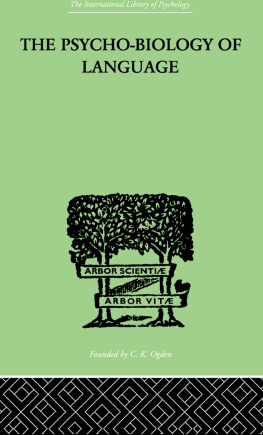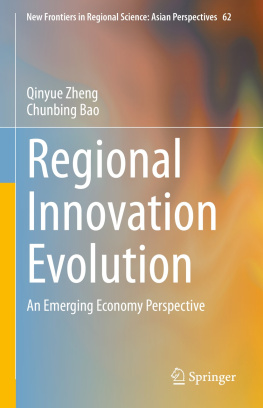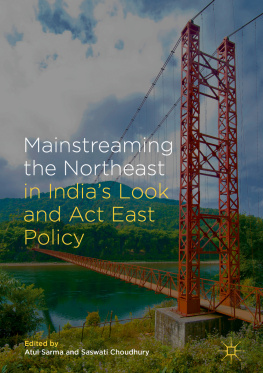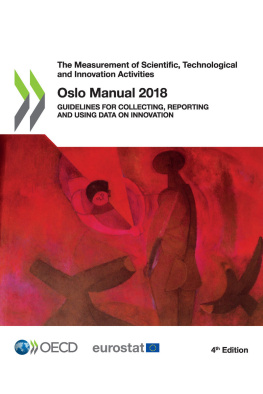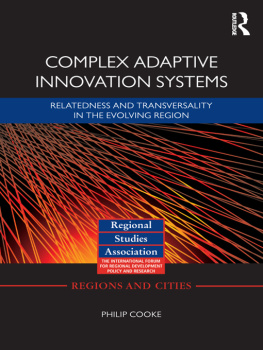
The International Library of Psychology
COGNITIVE PSYCHOLOGY
In 21 Volumes
| I | The Psycho-Analysis of Artistic Vision and Hearing | Ehrenzweig |
| II | A Source Book of Gestalt Psychology | Ellis |
| III | Common Sense and its Cultivation | Hankin |
| IV | The Nature of Learning | Humphrey |
| V | Eidetic Imagery and Typological Methods of Investigation | Jaensch |
| VI | The World of Colour | Katz |
| VII | Principles of Gestalt Psychology | Koffka |
| VIII | Colour and Colour Theories | Ladd-Franklin |
| IX | Sense-Perception and Matter | Lean |
| X | Invention and the Unconscious | Montmasson |
| XI | Psychology and Education | Ogden |
| XII | Human Speech | Paget |
| XIII | The Gestalt Theory and the Problem of Configuration | Petermann |
| XIV | Surprise and the Psycho-Analyst | Reik |
| XV | The Psychology of a Musical Prodigy | Rvsz |
| XVI | Biological Memory | Rignano |
| XVII | The Psychology of Reasoning | Rignano |
| XVIII | The Effects of Music | Schoen |
| XIX | Analysis of Perception | Smythies |
| XX | Speech Disorders | Stinchfield |
| XXI | The Psycho-Biology of Language | Zipf |

First published in 1936 by
George Routledge & Sons, Ltd.
Reprinted 2002, by
Routledge
2 Park Square, Milton Park, Abingdon, Oxon, OX14 4RN
Transferred to Digital Printing 2007
Routledge is an imprint of the Taylor & Francis Group
1936 George Kingsley Zipf
All rights reserved. No part of this book may be reprinted or reproduced or utilized in any form or by any electronic, mechanical, or other means, now known or hereafter invented, including photocopying and recording, or in any information storage or retrieval system, without permission in writing from the publishers.
The publishers have made every effort to contact authors/copyright holders of the works teptinted in the International Library of Psychology. This has not been possible in every case, however, and we would welcome correspondence from those individuals/companies we have been unable to trace.
These reprints are taken from original copies of each book. In many cases the condition of these originals is not perfect. The publisher has gone to great lengths to ensure the quality of these reprints, but wishes to point out that certain characteristics of the original copies will, of necessity, be apparent in reprints thereof.
British Library Cataloguing in Publication Data
A CIP catalogue record for this book
is available from the British Library
The Psycho-Biology of Language
ISBN 041-5-20976-5
Cognitive Psychology: 21 Volumes
ISBN 041-5-21126-3
The International Library of Psychology: 204 Volumes
ISBN 041-5-19132-7
ISBN 978-1-136-31053-9 (ePub)
PREFACE
NEARLY ten years ago, while studying linguistics at the University of Berlin, it occurred to me that it might be fruitful to investigate speech as a natural phenomenon, much as a physiologist may study the beating of the heart, or an entomologist the tropisms of an insect, or an ornithologist the nesting-habits of a bird. That is, speech was to be regarded as a peculiar form of behavior of a very unusual extant species; it was to be investigated, in the manner of the exact sciences, by the direct application of statistical principles to the objective speech-phenomena. The stream of speech, whatever it might represent to the historical grammarian, the comparative philologist, or the descriptive phoneticist, was to be viewed as but a series of communicative gestures. The findings of the extensive investigation that resulted are now presented in full. They are presented, moreover, intentionally in such a manner that they will, I think, be readily available, not only to the professional linguist, but to any serious reader interested in linguistic phenomena, whether his interest be from the angle of the biological, sociological, or psychological sciences, or from the angle of aesthetics and belles lettres.
Perhaps nothing will more conveniently illustrate the nature, scope, and appeal of the material about to be discussed than the brief presentation of a few typical examples from our findings. For example, it can be shown that the length of a word, far from being a random matter, is closely related to the frequency of its usage the greater the frequency, the shorter the word. It can furthermore be shown either from speech-sounds, or from roots and affixes, or from words or phrases, that the more complex any speech-element is phonetically, the less frequently it occurs. As an illustration of the high degree of orderliness with which linguistic forces operate, the frequency distribution of words in English may be conveniently cited. In any extensive sample of connected English, it will, in all probability, be found that the most frequent word in the sample will occur on the average once in approximately every 10 words, the second most frequent word once in every 20 words, the third most frequent word once in every 30 words, the 100th most frequent word once in every 1000 words, the nth most frequent word once in every 10n words; in brief, the distribution of words in English approximates with remarkable precision an harmonic series. Similarly, one finds in English (or Latin or Chinese) the following striking correlation. If the number of different words occurring once in a given sample is taken as x, the number of different words occurring twice, three times, four times, n times, in the same sample, is respectively 1/22, 1/32, 1/42,....1/n2 of x, up to, though not including, the few most frequently used words; that is, we find an unmistakable progression according to the inverse square, valid for well over 95% of all the different words used in the sample.
The above evidence, as well as all the other evidence, points quite conclusively to the existence of a fundamental condition of equilibrium between the form and function of speech-habits, or speech-patterns, in any language. And it has been the chief concern of this investigation to assemble sufficient data to establish this finding as a condition probably generally present in speech. In addition, however, almost equal effort has been devoted to discovering and establishing the probable effect of this condition of equilibrium upon the evolutionary development of a given language. In the light of the data collected it appears that the impulse to preserve or restore this condition of equilibrium is the underlying cause of linguistic change which, as is commonly known, is constantly occurring, leading to dialectal divergences, if not to wide linguistic cleavages. By change is meant not only changes in phonetic form and accent, but changes in meaning, in emotional intensity, in syntactical arrangement.
Of course, during this entire investigation, a very understandable human question has continuously lurked in the background. What person in speaking ever selects or arranges his words for the sake of preserving or restoring any imaginable condition of equilibrium in the resultant frequency-distribution of the elements of his speech? Clearly we select words according to their meanings, and according to the ideas and feelings which we wish to convey; both content and direction of our speech are dictated almost solely by exigencies of meaning and emotion. What, then, is the nature of meaning and emotion that their manifestation in the production of speech reveals such a high degree of orderliness as we find? A study of language is certainly incomplete which totally disregards all questions of meaning and emotion even though these refer to the most elusive of mental phenomena. Therefore I have ventured a cautious inspection of the problems of meaning, emotion, and of mental behavior in general, as they appear in light of the new data empirically derived from the stream of speech. The inspection of these problems has not, however, been undertaken
Next page
